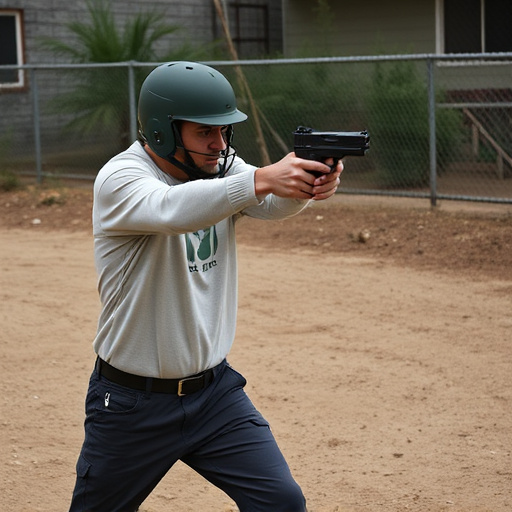Maximizing pepper spray shelf life requires understanding the chemistry of its active ingredient, capsaicin, and controlling storage conditions. Heat, light, and oxygen degrade the chemical over time, so keeping pepper spray cool, dry, and away from direct sunlight extends its effectiveness. Proper storage, including sealing containers and avoiding extreme temperatures/humidity, combined with regular maintenance like inspecting for damage and using compressed air, significantly prolongs shelf life. Following these measures ensures users have reliable protection when needed, enhancing safety and security.
In today’s world, personal protection devices like pepper spray are essential tools for safety. Understanding chemical irritants, particularly their role in pepper spray, is crucial for effective self-defense. This article delves into the science behind these compounds and explores a critical aspect: pepper spray shelf life extension. We’ll discuss factors affecting its durability and effectiveness, along with practical strategies to maximize its lifespan, ensuring you stay protected when it matters most.
- Understanding Chemical Irritants and Their Role in Personal Protection Devices
- Pepper Spray Shelf Life: Factors Affecting Durability and Effectiveness
- Strategies for Extending the Lifespan of Your Pepper Spray Device
Understanding Chemical Irritants and Their Role in Personal Protection Devices
Chemical irritants play a crucial role in personal protection devices like pepper spray, serving as an effective deterrent against potential threats. These substances are designed to cause temporary yet intense discomfort when encountered by the eyes, nose, and skin, enabling users to create distance from dangerous situations. The primary chemical used in most pepper sprays is capsaicin, derived from chili peppers. This irritant triggers sensory nerve endings, leading to a burning sensation and subsequent inflammation, which can help neutralise an attacker and provide precious time for escape.
In the context of pepper spray shelf life extension, understanding the chemistry behind these irritants is essential. Factors like exposure to heat, light, and oxygen can degrade the active ingredients over time, reducing their effectiveness. Therefore, proper storage conditions, including cool temperatures and limited exposure to direct sunlight, are vital to maintain optimal performance. By preserving the potency of chemical irritants within personal protection devices, users can rely on them during critical moments, ensuring maximum safety and security.
Pepper Spray Shelf Life: Factors Affecting Durability and Effectiveness
Pepper spray, a common personal protection device, is effective due to its active ingredient capsaicin, which causes temporary but intense irritation. However, understanding its shelf life and factors affecting durability and effectiveness is crucial for users to ensure optimal performance when needed. The shelf life of pepper spray can vary significantly depending on several key elements: storage conditions, manufacturing quality, and environmental factors.
Proper storage, typically in a cool, dry place away from direct sunlight, can extend the pepper spray shelf life. Extreme temperatures, both hot and cold, can degrade the chemical composition, reducing its potency. Additionally, exposure to moisture or high humidity levels may lead to product degradation. Manufacturing quality plays a vital role; higher-quality products often employ better preservation methods, ensuring consistency over time. Lastly, how and when the spray is used matters; frequent use or extreme environmental conditions during deployment can accelerate the loss of effectiveness.
Strategies for Extending the Lifespan of Your Pepper Spray Device
Extending the lifespan of your pepper spray device is crucial for ensuring its effectiveness and reliability when you need it most. One of the key strategies is proper storage. Keep the device in a cool, dry place away from direct sunlight and extreme temperatures. Extreme heat can degrade the chemical composition, while cold can affect the spraying mechanism. Ensure the container is sealed tightly to prevent any contamination or degradation.
Regular maintenance plays a vital role as well. Periodically inspect your pepper spray for any signs of damage, corrosion, or leakage. Remove any built-up residue inside the nozzle by carefully blowing it out with compressed air. Additionally, storing extra refills separately and replacing them according to the manufacturer’s recommendations can prolong the overall shelf life of your device.
In understanding chemical irritants, specifically pepper spray, and its integral role in personal protection devices, we’ve explored the factors that influence shelf life. By recognizing the impact of temperature, humidity, and storage practices on pepper spray durability, users can maximize its effectiveness. Implementing simple strategies for extending pepper spray lifespan, as discussed, ensures individuals have reliable access to this vital self-defense tool when needed most. For enhanced personal safety, proper maintenance and timely replacement are key, allowing you to stay prepared in today’s diverse and unpredictable world.
